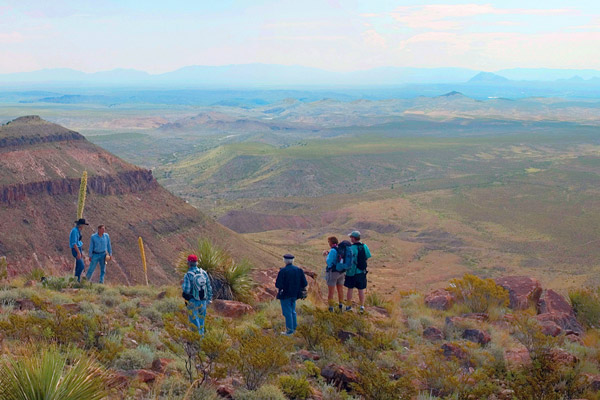Las Cruces National Monuments, Part 1 – Exploring Organ Mountain
The vast Organ Mountains Desert Peaks National Monument includes stunning vistas, stagecoach trails, Billy the Kid’s hideout, Geronimo’s Cave, Apollo Astronaut training grounds and 10 NEW wilderness areas established in 2019. These new Doña Ana County sites of more than 241,000 acres areas boast sky-island mountains, native Chihuahuan Desert grasslands, caves, unique lava flows, limestone cliffs, and winding canyons.
New Wilderness Areas in the Land of Enchantment
1. ADEN LAVA FLOW WILDERNESS
Basalt flows, volcanic craters and sand dunes characterize the landscape where a shield volcano of Aden Crater produced extensive lava flows more than 10,000 years ago. The Aden Lava Flow contains pressure ridges, lava tubes and crevices up to five feet wide and 30 feet deep. A great location for geological sightseeing and wildlife photography.
2. POTRILLO MOUNTAINS WILDERNESS
Extinct volcanoes, black lava fields and miles of desert grassland combine to give the West Potrillo Mountains qualities found nowhere else in New Mexico. You’ll find a unique “cholla savannah” with 10-foot-tall cholla cacti in the center of the mountains. Ephemeral lakes in Indian Basin provide seasonal ponds for ducks. An abundance of small mammals attracts raptors in the winter months. Several undisturbed structures dating from 1300 to 1400 AD also have been found here.
3. CINDER CONE WILDERNESS
This area features an extremely high concentration of undisturbed cinder cone mountains and rich wildlife habitat prized by hunters and non-hunters alike.
4. EAST POTRILLO MOUNTAINS WILDERNESS
The East Potrillos (“colt” in Spanish) receive few visitors, due to the rugged topography and the lack of water or shade. No perennial streams originate in the range, and none flow nearby. Plant communities are Chihuahuan desert scrublands, creosote bush desert, and desert grasslands. The range is long and narrow, with an orientation trending NNW to SSE. The maximum elevation of the range is approximately 5,300 feet. Access to the general vicinity is through New Mexico State Road 9, and several unpaved county roads. Take plenty of water.
5. MOUNT RILEY WILDERNESS
Mount Riley is the highest point in the area, rising abruptly more than 1,700 feet above the surrounding desert plain to nearly 6,000 feet. The Wilderness, on the east side of the Potrillo Mountains section of the monument, is comprised of three volcanic cinder cones. There are no maintained trails to the summits, but hikers who find a route to the top are rewarded with fine views.
6. WHITETHORN WILDERNESS
The whitethorn acacia is the area’s namesake. The native shrub is a key year-round food source for quail and a summer food source for desert mule deer. Weathered lava invites small and large wildlife, and views stretch hundreds of miles.
7. SIERRA DE LAS UVAS WILDERNESS
Volcanic mountains support outstanding high desert grasslands and sustain thriving populations of quail, deer, javelina, and other wildlife. Native American cultures left their marks in these scenic mountains. You might be fortunate to find petroglyphs made by people of the Jornada Mogollon Culture.
8. BROAD CANYON WILDERNESS
Secluded Broad Canyon Wilderness shelters hidden winding canyons, water pools, flat topped mountains, and dozens of rich cultural sites. Only 45 minutes from Las Cruces, this area has beautiful views that stretch across southern New Mexico and into Mexico. It is home to countless archeological sites and the most extensive record of previous Native American habitation within the Organ Mountains-Desert Peaks region.
9. ROBLEDO MOUNTAINS WILDERNESS
Named after Spanish colonist Pedro Robledo, these mountains sheltered Billy the Kid in the late 19th century and are a potential habitat for desert bighorn sheep reintroduction.
10. ORGAN MOUNTAINS WILDERNESS
The focal point of the Organ Mountains section of the monument provides great recreation opportunities, important wildlife habitat and critical watershed protection. A wide variety plants are found here, and the presence of seasonal springs and streams makes the area critically important to wildlife, including golden eagles, hawks, owls, and mule deer. The jagged, high spires of the Organ Mountains define the Mesilla Valley and form one of the steepest mountain ranges in the Western United States. The Organs were mentioned in the earliest Spanish journals, and now are popular with hikers and rock climbers.
Millions of years of volcanic eruption and erosion made these breathtaking sights at Organ Mountains Desert Peaks National Monument. And that’s just the beginning! Even more spectacular wilderness areas in the next blog when we explore Prehistoric Trackways, White Sands National Park and Picacho Peak in Part Two of Las Cruces National Monuments.
Request your stay at Hacienda RV Resort for an unforgettable adventure!

